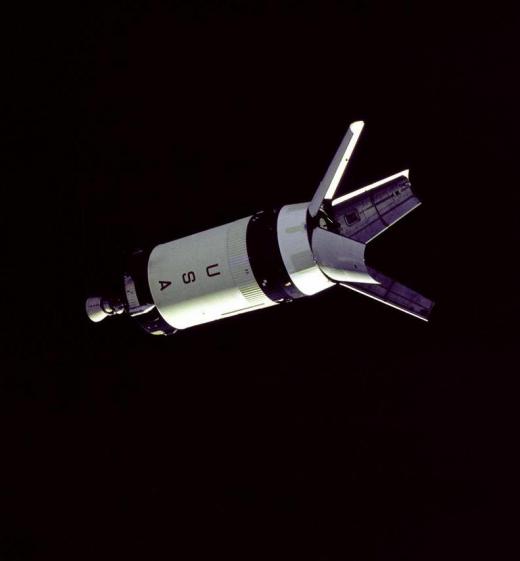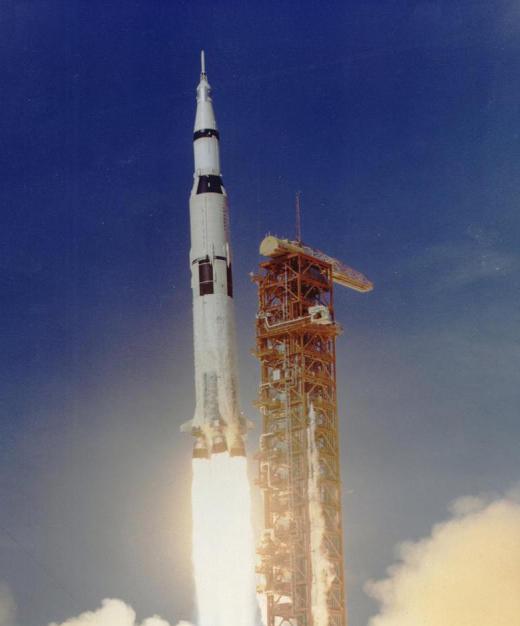What Was the Saturn V Rocket?
 Mary McMahon
Mary McMahon
The Saturn V rocket was the rocket which put a man on the moon, and literally propelled the United States to the forefront of the space race. This iconic rocket powered numerous Apollo missions of the moon, along with Skylab One, and numerous models can be seen on display in aerospace museums across the United States, along with components from Saturn V rockets and various prototypes.
This rocket was developed by Wernher Von Braun, a scientist who is regarded as one of the best rocket scientists of the 20th century. Von Braun supervised several government contractors in the design and the development of the Saturn V rocket, including IBM, Boeing, Douglas Aircraft Company, and North American Aviation. The program received lavish funding from the United States government, which wanted to ensure that it would remain at the forefront of space exploration.

Saturn Vs were used for missions between 1967 and 1973. This rocket was among the largest and most powerful ever used for space missions, consisting of three separate stages, each powered with liquid fuel, and a control panel. Fully assembled with its payload, the rocket stood 363 feet (111 meters) tall, requiring special infrastructure and support just to be assembled and prepared for launch. In the famous images of Apollo missions before launch, the bulk of the body of the spacecraft is actually the Saturn V rocket.

Multistage rockets are designed to allow each stage of the rocket to drop away as it is no longer needed. This is advantageous for several reasons. With a multistage rocket, it is possible to design different engines for different stages, which can make the rocket more efficient and ensure that the right engine is available for the right task. Developing stages also allows the rocket to drop excess weight as the fuel in each stage is expended, which increases efficiency.

Given the complexities and expense involved in the construction of the Saturn V rocket, some people may be surprised to learn that it was an expendable launch system, meaning that the components were designed for a single use, and the stages were not recovered as they dropped away from the rocket. This is one reason why the space program was so expensive, because each launch required a tremendous investment of time, talent, and funds. However, the expendability also allowed researchers to redesign the rocket to accommodate new data every time a new Saturn V rocket was ordered.
AS FEATURED ON:
AS FEATURED ON:














Discussion Comments
Being from the North Alabama area, I've seen the Saturn V all my life. It is a major exhibit at the U.S. Space and Rocket Center in Huntsville. That is one huge rocket.
The Saturn V was developed and tested at Marshall Space Flight Center in Huntsville and I know people whose parents and grandparents were on the design and/or development team. It's an amazing piece of technology design.
Post your comments